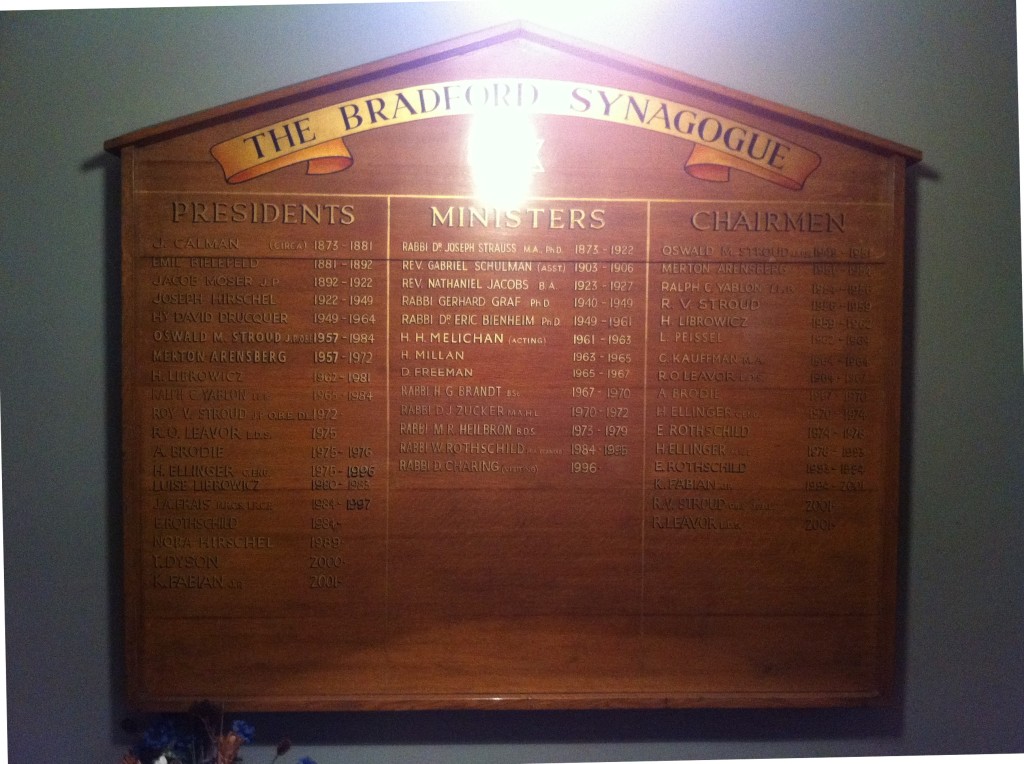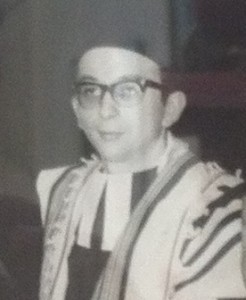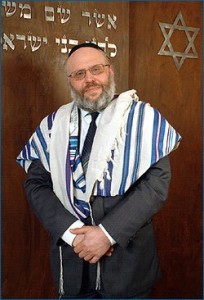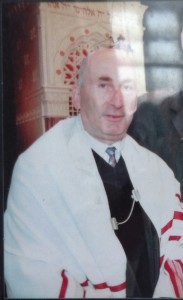Upon their arrival from the 1830’s it would appear that the actual “Jewish” element to been Jewish was not as high a priority as it perhaps it should have been. Business and assimilation appear to have taken precedence over actual ceremonial Judaism. This however only appears to be the case as there is some considerable time gap between the first Jewish arrivals in Bradford and the official formation of a community which would be sustained through a Synagogue. Forty years is a long time before someone asks the question of whether a synagogue should be built. People may have held private services in their own homes, and it is known that the Masonic Hall on Salem Street was used as a prayer facility during high holy days and other important festivals.
It took 30 years before a rabbi came to serve the families which would be drawn together forming a community. Rabbi Joseph Strauss came up in 1873, from Germany via London. Three years prior to this appointment, the Chief Rabbi had in fact tried to form a Jewish Association, but this met with apathy. This was when the community number some two to three hundred people, which is quite considerable. It could be suggested that for the first 30 years, the Merchants and other Jews here simply wanted to be as assimilated as they could be, while maximising their commercial potential.
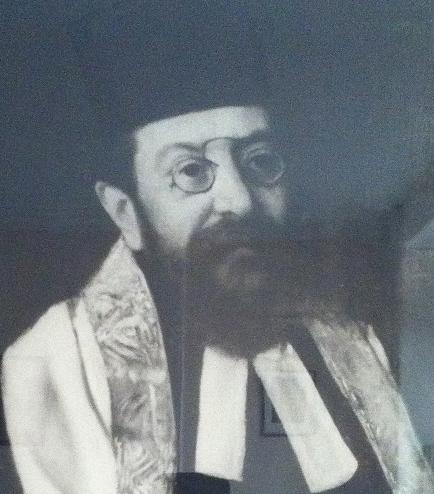
Print of Rabbi Joseph Strauss, Bowland Street Synagogue. The colour original is in Leeds in the family collection.
Eventually in 1881 the Synagogue was opened.
From Rabbi Strauss to the present day there have been 13 Rabbi’s or Ministers who have led the Congregation of Bowland Street:
- 1873-1922 Rabbi Dr. Joseph Strauss M.A. Ph.D
- 1903-1906 Rev. Gabriel Schulman (Asst)
- 1923-1927 Rev. Nathaniel Jacobs B.A.
- 1940-1949 Rabbi Gerhard Graf Ph.D
- 1949-1961 Rabbi Dr. Erich Bienheim Ph.D
- 1961-1963 M.H. Melichan (Acting
- 1963-1965 H. Millan
- 1965-1967 D. Freeman
- 1967-1970 Rabbi H.G. Brandt B.Sc.
- 1970-1972 Rabbi D.J. Zucker M.A.H.L.
- 1973-1979 Rabbi Michael R. Heilbron B.D.S.
- 1984-1995 Rabbi Walter M.A. Rothschild (Cantab)
- 1996- Present Rabbi Dougls Charing
- A Bezalel Art Scrolled document and silver casing from the City Hall Hoard, associated with 1910-1911 Lord Mayor Jacob Moser. Photo by Benjamin Dunn 2012
In 1906, the Orthodox Community built their own purpose built Synagogue, a stones throw from Bowland Street. This was at Spring Gardens, over looking the valley which the Bradford Beck flows out into Shipley and the River Aire. This westward flow would later be taken up by the Jewish population, as they would drift towards the leafier and more suburban parts of Bradford, beyond Heaton and Frizinghall and into Shipley.
This domed building was funded with subscriptions from prominent local businessman and Councillor Jacob Moser, who was in fact a member of the nearby Reform Synagogue. Before relocating to this purpose built place of worship, the Orthodox congregation prior to 1885, initially met in a room in Tyrrel Street, in the centre of Bradford, a short distance from the City Hall. The first Orthodox Synagogue was at 22 Houghton Place, between the years 1885 and 1905. In 1890 a rival congregation was founded at 25 Houghton Place, however both congregations had merged by 1899.
-
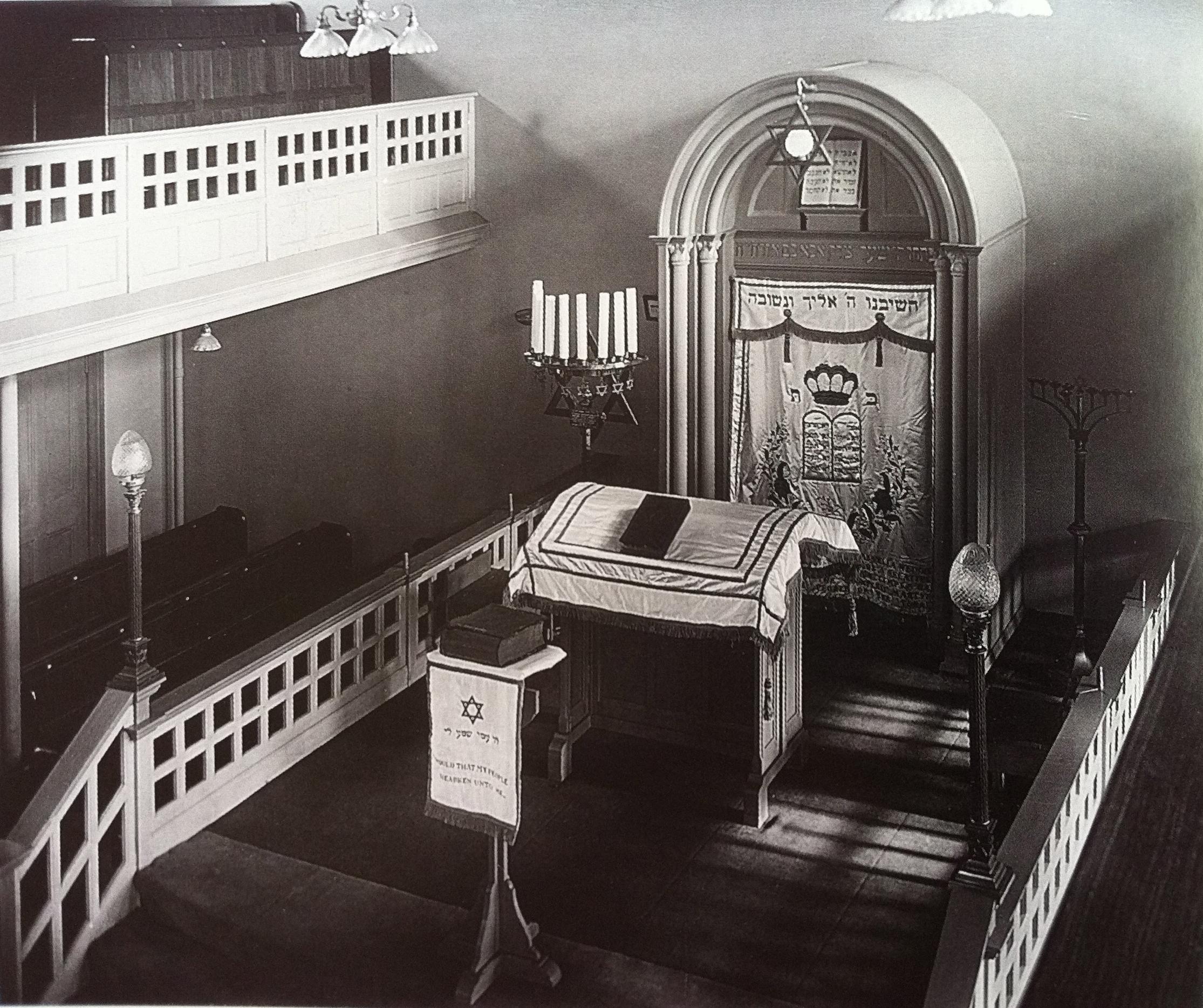
The now vanished interior of Spring Gardens Orthodox Synagogue, built 1905. The inside has been completely altered and is now an Islamic Junior School.
By 1969 it was clear that the old Synagogue, built all that time ago at the turn of the century had served its purpose in serving the local community. The community were no longer local, and therefore a new building had to be constructed. Built in the similarly named Springhurst Road, the very modern new shul (synagogue) would open in 1970, designed by the architect Basil Gillinson and its own members with their own needs in mind, even down to the height of one of the worktops in the kitchen suiting the small stature of one of the then chairmen of the Ladies Guild, Mrs Joyce Hoffbrand. it was Joyce who turned her creative talents to designing the logo for shul stationery.
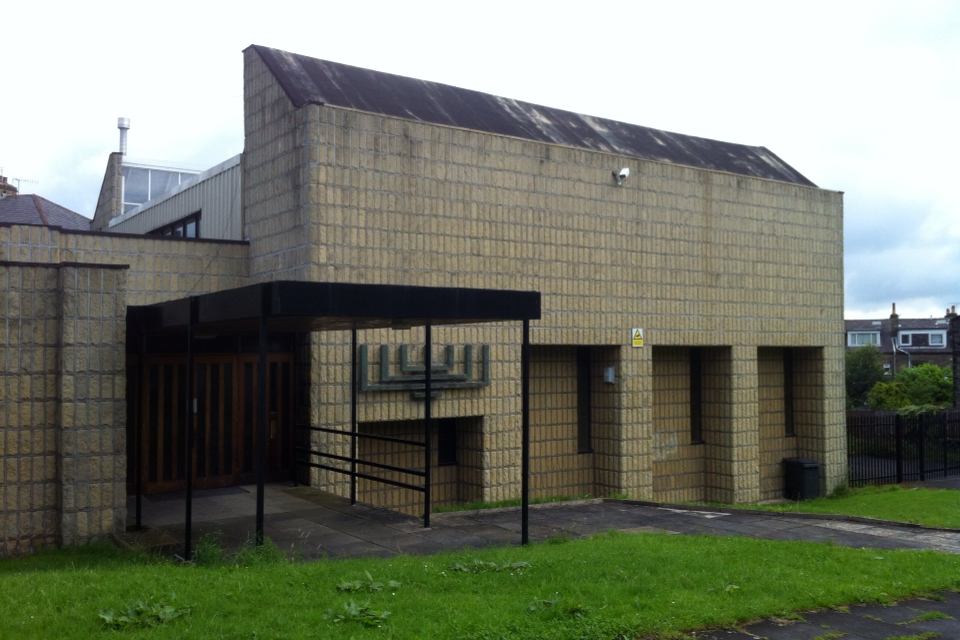
Bradford Hebrew Congregation’s ‘Shipley Synagogue’ on Springhurst Road, built 1969-1970. Photo by Benjamin Dunn 2012.
The committee at the time of its building included Joyce’s late husand Eric Hoffbrand, Jack Reuben, Maxwell Abrahams and Sydney Morris.
The community gradually moved further and further away, and diminished rapidly after the 1990′s. In the summer of 2012, it was finally decided to put the key on the hook for good, and it was closed on 10th November 2012, a very sad day for all concerned. The remaining members would be absorbed into Orthodox synagogues in Leeds and Harrogate.


